STEP INSIDE A ’70s BROOKLYN BROWNSTONE
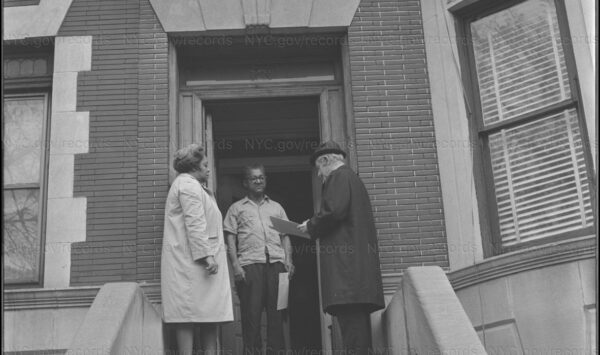
******************************************************************************************************************************** Brownstone Detectives investigates the history of our clients’ homes. The story you are about to read was composed from research conducted in the course of one of those investigations. Do you know the history of YOUR house? ******************************************************************************************************************************** In 1970, officials with the New York City Housing and Development Administration (HDA) paid a visit to the owner of No. 23 Virginia Place in Crown Heights. The reason for the visit was assisting citizens with the rehabbing of their homes. The city wanted to get some great shots of their beureuacrats helping everyday folks, and so they took a photographer along with them to show them doing hust that. As a result of the public affairs shoot, we have today some great images of what No. 23 Virginia Place looked lie in 1970. Enjoy! Follow @BrownstoneDetec Share ———————————————————————————————————————– The Brownstone Detectives Brownstone Detectives is an historic property research agency. Our mission is to document and save the histories of our clients’ homes. From our research, we produce our celebrated House History Books and House History Reports. Contact us today to begin discovering the history of your home.
AN HISTORIC NOR’EASTER STRIKES NYC (1978)
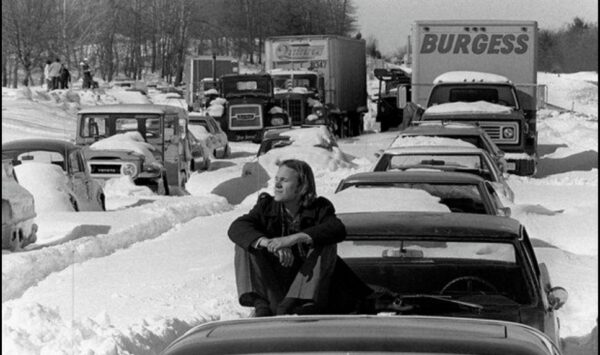
******************************************************************************************************************************** Brownstone Detectives investigates the history of our clients’ homes. The story you are about to read was composed from research conducted in the course of one of those investigations. ******************************************************************************************************************************** We’ve all heard of the Great Blizzard of 1888. But in 1978, 100 years after the historic snowstorm, New York City was struck by “one of the biggest snow storms ever to hit the New York area.” See this 7 1/2-minute newsreel to get an idea of how big it was. Follow @BrownstoneDetec Share ———————————————————————————————————————– The Brownstone Detectives Brownstone Detectives is a property research agency. Our mission is to research, document, and save the histories of our clients’ historic properties. From this research, we produce our celebrated House History Books. Each book is fully cited, featuring detailed narratives and colorful graphics, and is designed to bring the history of any house to life. Contact us today to begin discovering the history of your home.
RESCUE OPERATION ON “BOERUM HILL” (1964)
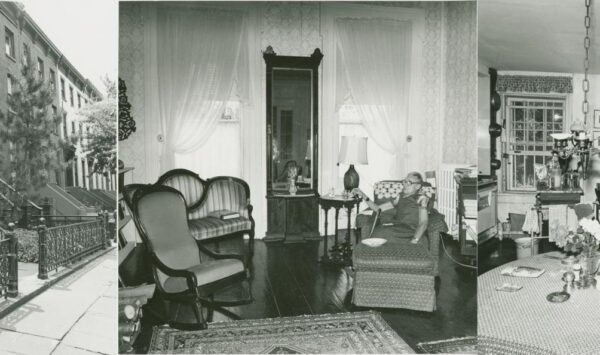
******************************************************************************************************************************** Brownstone Detectives investigates the history of our clients’ homes. The story you are about to read was composed from research conducted in the course of one of those investigations. Do you know the history of YOUR house? ******************************************************************************************************************************** Most Boerum Hill residents do not know the name Helen Buckler – but they should. While she wasn’t instrumental in building Boerum Hill, she was the reason it got its name. She also started the organization that ushered in the wave of brownstoners and brownstoning in the area, the Boerum Hill Association. Brownstoning – or the renovation of brownstones back to their former glory – is not a recent trend. Like many other movements, brownstoning appeared in parts of New York City in waves as good/bad economic times ebbed and flowed, neighborhoods fell in and out of fashion, and young professionals, who were usually the harbingers of those waves, “discovered” New York City’s 19th century brownstones. One of those waves washed over Brooklyn in the early 1960s. Helen Buckler rode, from her Dean Street brownstone, firmly atop the crest of that era’s wave. She named it Boerum Hill. BOERUM HILL BEGINS A few years after Buckler bought No. 238 Dean Street, she started the Boerum Hill Association. Then, already at the age of 70, she was no ordinary brownstoner. Her enthusiasm attracted to the organization approximately 20 like-minded families who were also interested in renovating their brownstones in the area. The purpose of the organization was to improve the community and […]
THE SNATCHING OF ST. JOHN’S STOOPS (1970)
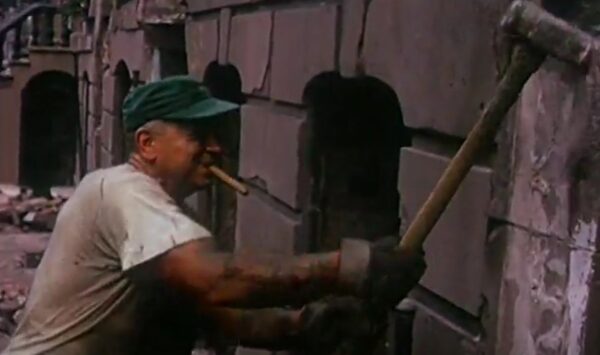
******************************************************************************************************************************** Brownstone Detectives investigates the history of our clients’ homes. The story you are about to read was composed from research conducted in the course of one of those investigations. Do you know the history of YOUR house? ******************************************************************************************************************************** In the 1970s, a row of stoops belonging to St. Johns Place brownstones were destroyed. You may notice them today as you walk down St. Johns Place and wonder at the stoop-less brownstones and wonder why they look so much like brownstone, but – for some reason – cannot be. These Victorian brownstones on the north side of St. John’s Place between 5th and 6th avenues – Nos. 35 to 67 – were, at that time, in an extremely derelict state. A part of the slums of the Park Slope section of Brooklyn, they were being transformed into working class housing, apartments for low-income families. A part of the conversion of these brownstones to apartments was the removal of their stoops. This extreme adjustment to the façades of these buildings had the benefit of allowing them to have just one entrance – on the ground level – through which all apartment dwellers would access their apartments. If you ever wondered what that destruction looked like, you’re in luck! In this short amateur film, these stoops can be seen being systemically removed from the fronts of their brownstones. The film is in color, lasts approximately seven minutes, and gives a taste of 1970s Park Slope. Follow @BrownstoneDetec Share ———————————————————————————————————————– The Brownstone Detectives […]
RUTH & SAM & THE BUSHWICK FIRES (1977)
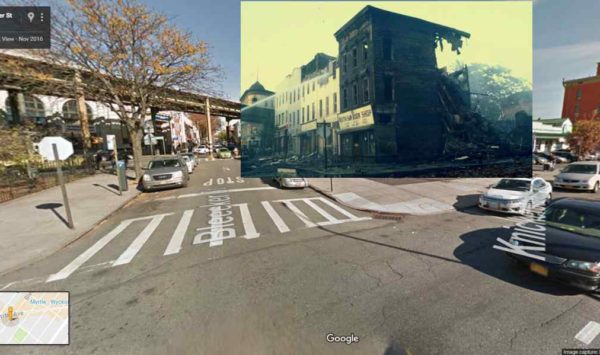
******************************************************************************************************************************** Brownstone Detectives investigates the history of our clients’ homes. The story you are about to read was composed from research conducted in the course of one of those investigations. Do you know the history of YOUR house? ******************************************************************************************************************************** In 1977, a great conflagration burned out the very heart of Bushwick. It was, at the time, one of the largest-scale fires that the Fire Department had ever fought. A 10-alarm fire, it would become “one of the largest structural fires in the city’s history,” according to the New York Times. It started suspiciously at the corner of Knickerbocker Avenue and Bleecker Street in the old Schwaben Hall, an historic German meeting hall most lately used as a knitting factory. According to the Times, the fire would rage down seven blocks of houses, destroying 23 buildings, and forcing the evacuation of more than 250 people. The destructive fire came directly on the heels of the infamous Blackout of 1977, and although the fire would smolder for days after being put out, it took about three to five hours, initially, for 55 units of firefighters from Manhattan, Queens, and Brooklyn, to get it under control. And even with this number of firefighters on the scene, it was apparent that they were working without the tools they needed to fight a fire of this intensity. Since the fire hydrants had been used by city residents throughout the summer to keep cool, they were low on water. Also, firefighters were working with an historic […]
THE “GOODFELLAS” OF CUMBERLAND STREET
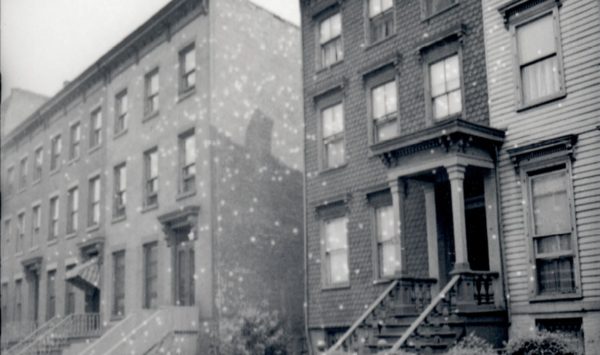
One of the Brownstone Detectives’ first House History Books, No. 231 Cumberland Street: The Story of a House, tells the story of an 1852 antebellum frame home just steps from Fort Greene Park. It’s an action-packed tome, replete with treachery, “poudrette,” “small art,” SROs, and the gangland figures from “Goodfellas.” Here is a brief timeline of the history of this single landmarked property, matched up with “spreads” from the book: THE HISTORY OF A BROOKLYN HOUSE The land beneath which No. 231 would someday rise, started out as a tobacco farm owned by the first Italian immigrant to New York, Pietre Cesare Alberti. The farmland would eventually be built upon in 1851-2, when builder John Ross constructed a row of three homes there. First owned by a woman with a tragic history, a melodrama involving treachery, another man, and an infant daughter – which became the gossip of the newspapers of the time – No. 231 was rented out throughout the the 1850s and 1860s, in addition to many returning Civil War veterans, to merchants and their small families. One of those merchants featured prominently in the founding of the Lafayette Avenue Presbytery Church. Before this, however, he had begun his interesting career as a Night Soil Man – starting a company which, amongst other “agricultural” endeavors, collected human excrement from the backyard privvies of Brooklyn, selling this “compost” to Long Island farmers as the appropriately – if euphemistically – named “poudrette.” The property was then owned by an immigrant, […]
“PEACE” COMES TO STUYVESANT EAST (1921)
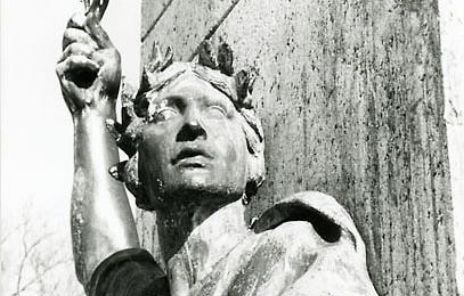
******************************************************************************************************************************** Brownstone Detectives investigates the history of our clients’ homes. The story you are about to read was composed from research conducted in the course of one of those investigations. Do you know the history of YOUR house? ******************************************************************************************************************************** In 2014, The Brownstone Detectives partnered with the New York City Parks Department to help celebrate the lives of the servicemembers of Bedford-Stuyvesant Heights who made the ultimate sacrifice during the Great War. We researched these heroes to locate pictures, stories, and their descendants to be brought together for a ceremony that dedicated a new “Victory and Peace” war memorial at Saratoga Park. ******************************************************************************************************************************** After nearly three years of mourning, Stuyvesant East was ready to remember its dead in a very public way. On 11 September 1921, after neighbors in the eastern section of Stuyvesant Heights had spent two years collecting the $6,000 necessary to defray the cost of a war memorial, the Victory and Peace statue was finally delivered to Saratoga Square. With great pomp and circumstance, amid a good deal of political speech-making and the delivery of grandiose eulogies and war veterans celebrating the war’s end, the 6-ton war memorial, sculpted by James Novelli, was unveiled at the Saratoga Avenue entrance to the Saratoga Square in front of more than 3,000 witnesses. “The eastern end of the park had been appropriately decorated with the monument draped in large American flags which at the presentation were dropped by two servicemembers presenting to view the ten-foot Milford granite memorial.” Revealed was […]